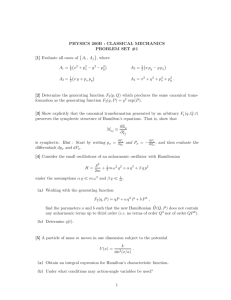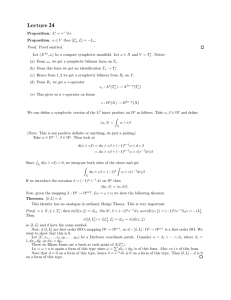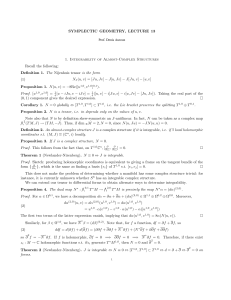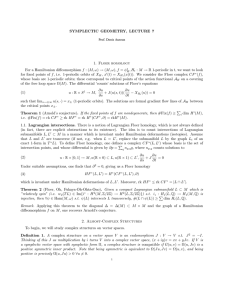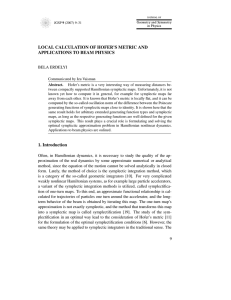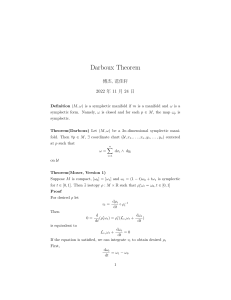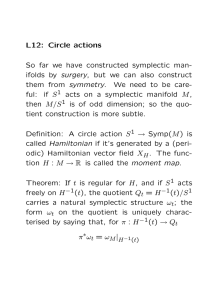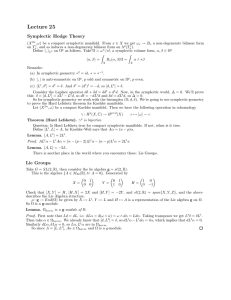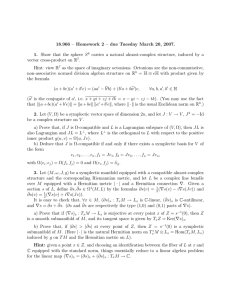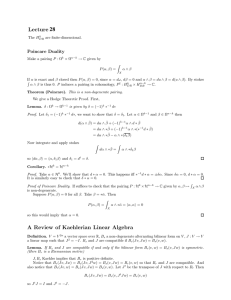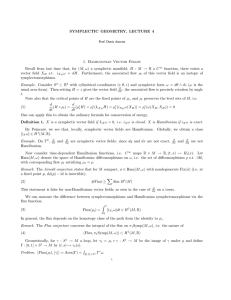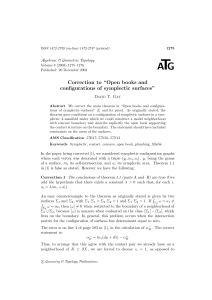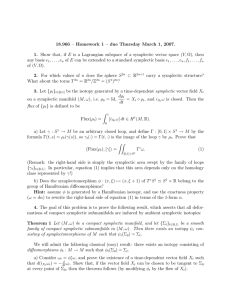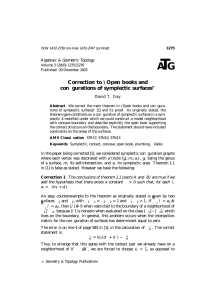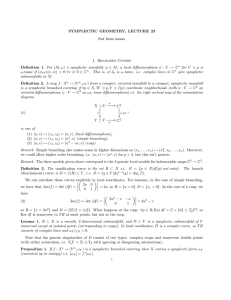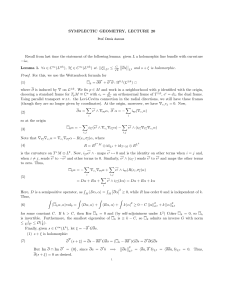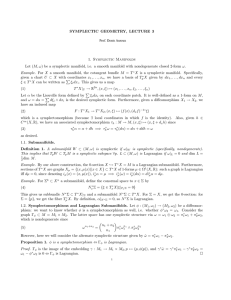SUPERINTEGRABILITY OF RATIONAL RUIJSENAARS-SCHNEIDER SYSTEMS AND THEIR ACTION-ANGLE DUALS
advertisement
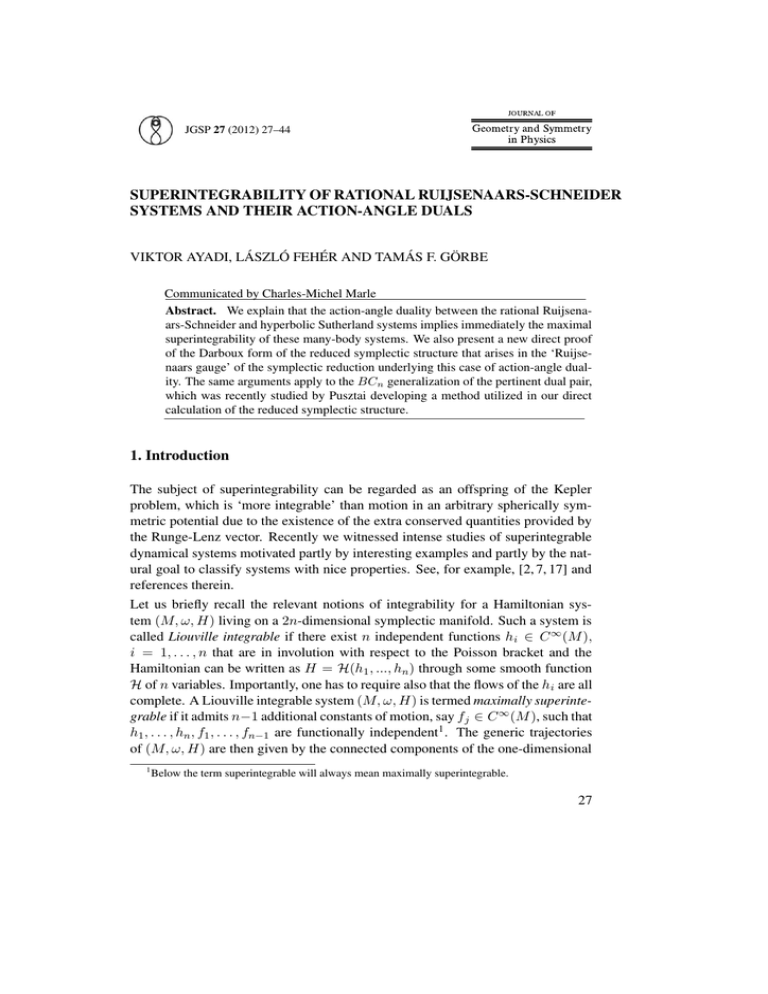
JGSP 27 (2012) 27–44 SUPERINTEGRABILITY OF RATIONAL RUIJSENAARS-SCHNEIDER SYSTEMS AND THEIR ACTION-ANGLE DUALS VIKTOR AYADI, LÁSZLÓ FEHÉR AND TAMÁS F. GÖRBE Communicated by Charles-Michel Marle Abstract. We explain that the action-angle duality between the rational Ruijsenaars-Schneider and hyperbolic Sutherland systems implies immediately the maximal superintegrability of these many-body systems. We also present a new direct proof of the Darboux form of the reduced symplectic structure that arises in the ‘Ruijsenaars gauge’ of the symplectic reduction underlying this case of action-angle duality. The same arguments apply to the BCn generalization of the pertinent dual pair, which was recently studied by Pusztai developing a method utilized in our direct calculation of the reduced symplectic structure. 1. Introduction The subject of superintegrability can be regarded as an offspring of the Kepler problem, which is ‘more integrable’ than motion in an arbitrary spherically symmetric potential due to the existence of the extra conserved quantities provided by the Runge-Lenz vector. Recently we witnessed intense studies of superintegrable dynamical systems motivated partly by interesting examples and partly by the natural goal to classify systems with nice properties. See, for example, [2, 7, 17] and references therein. Let us briefly recall the relevant notions of integrability for a Hamiltonian system (M, ω, H) living on a 2n-dimensional symplectic manifold. Such a system is called Liouville integrable if there exist n independent functions h i ∈ C ∞ (M ), i = 1, . . . , n that are in involution with respect to the Poisson bracket and the Hamiltonian can be written as H = H(h1 , ..., hn ) through some smooth function H of n variables. Importantly, one has to require also that the flows of the h i are all complete. A Liouville integrable system (M, ω, H) is termed maximally superintegrable if it admits n−1 additional constants of motion, say fj ∈ C ∞ (M ), such that h1 , . . . , hn , f1 , . . . , fn−1 are functionally independent1 . The generic trajectories of (M, ω, H) are then given by the connected components of the one-dimensional 1 Below the term superintegrable will always mean maximally superintegrable. 27
